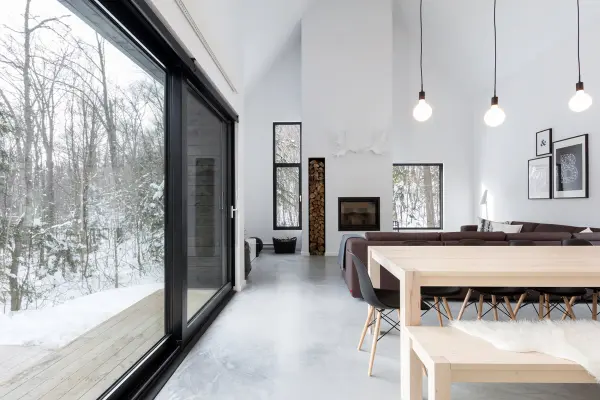Scandinavian style interior has gained worldwide popularity thanks to its unique combination of elegant simplicity, functionality, and distinctive Scandinavian coziness. This northern interior style, which originated in Scandinavian countries in the early 20th century, attracts with its practicality, thoughtfulness, and special Scandinavian aesthetics. The Scandi style in interior design, Nordic interiors, and Scandinavian minimalism are perfect for creating bright, spacious, and functional spaces even in small rooms. Modern Scandinavian interior inspires with its harmony and ability to transform any dwelling into a true home, where every detail is in its place. The features of Scandinavian style allow you to create not just a beautiful, but a truly practical space filled with light and positive energy. The history of Scandinavian style spans more than a hundred years, during which it has become one of the most sought-after design approaches worldwide.
"In Scandinavian design, there is no place for the superfluous. Each interior item must be not only beautiful but also functional. It's a philosophy of practical beauty that makes our everyday life more comfortable," — Ilse Crawford, founder of Studioilse and expert in Scandinavian design.
Main Features of Scandinavian Interior Style
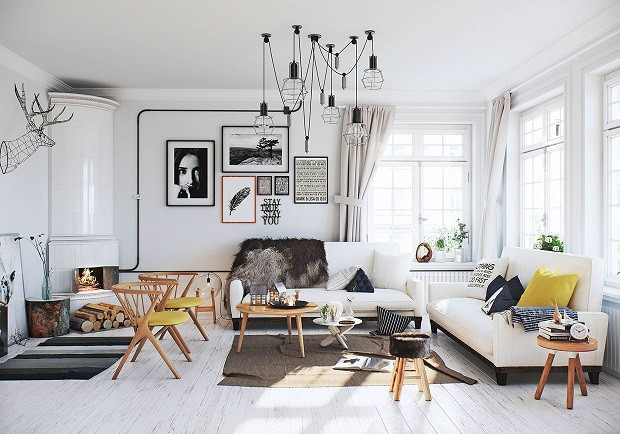 To fully embody all the main features of Scandinavian interior style in your home, pay attention to the following key elements that will make your space truly Scandinavian:
To fully embody all the main features of Scandinavian interior style in your home, pay attention to the following key elements that will make your space truly Scandinavian:
- Minimalism and absence of decorative excesses
- Functionality of each interior element
- Light color palette with accents
- Use of natural materials in the interior
- Abundance of natural light and white walls
- Eco-friendly design and sustainable solutions
- Laconic forms and clean lines
Implementing these principles will help you create an authentic Scandinavian space where every detail will not only please the eye but also make your everyday life more comfortable and pleasant. Elements of Scandinavian interior always maintain a balance between beauty and practicality.
Color Palette of Scandinavian Interior
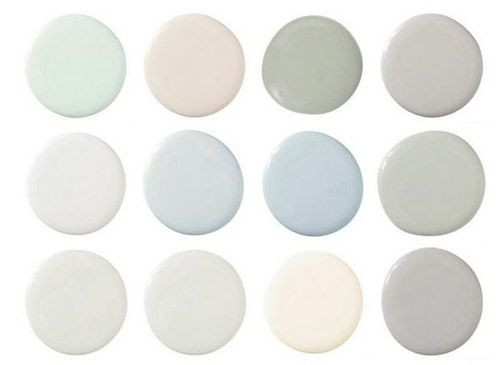 Choosing the right color palette is one of the decisive factors when creating a flawless bright Scandinavian interior. Here are the main color solutions that will instantly transform your space and fill it with Scandinavian spirit:
Choosing the right color palette is one of the decisive factors when creating a flawless bright Scandinavian interior. Here are the main color solutions that will instantly transform your space and fill it with Scandinavian spirit:
- Basic colors: white, gray, beige, cream
- Accent shades: muted blue, mint, pale pink
- Natural colors: wood tones, green, blue
- Textural elements: natural wood, stone, textiles
Skillful use of this palette will create a visually spacious and light-filled space that will be pleasant to be in any time of the year. Light tones in Scandi interiors play a key role, creating a sense of spaciousness and airiness. Wooden surfaces and wood combined with white bring warmth and naturalness to the monochrome palette.
Furniture and Decor in Scandinavian Style
 Furniture in Scandinavian style is characterized by laconic forms and functionality. Minimalist furniture made of light wood is the foundation of Scandinavian design. Open shelves and niches that simultaneously serve for storage and decor are typical. Scandinavian furniture price distinguishes it from premium segments — it is accessible to a wide range of consumers due to the simplicity of construction and absence of unnecessary details.
Furniture in Scandinavian style is characterized by laconic forms and functionality. Minimalist furniture made of light wood is the foundation of Scandinavian design. Open shelves and niches that simultaneously serve for storage and decor are typical. Scandinavian furniture price distinguishes it from premium segments — it is accessible to a wide range of consumers due to the simplicity of construction and absence of unnecessary details.
| Interior Element | Materials | Features |
|---|---|---|
| Furniture | Light wood (pine, spruce, birch), plywood | Simple forms, functionality, compactness |
| Textiles | Cotton, linen, wool, fur | Natural shades, geometric patterns, textile accents |
| Decor | Ceramics, glass, copper, brass | Minimalism, functionality, natural motifs |
| Lighting | Metal, wood, glass, paper | Simple geometric shape lamps, many light sources |
The presented table demonstrates the key elements used in creating a cozy northern design. Choosing the right materials and forms helps achieve the desired balance between functionality and aesthetics.
Scandinavian decor can be purchased today in specialized stores or ordered online. When choosing accessories for Scandinavian interior, it is worth paying attention to the naturalness of materials and restraint of design. Textiles for Scandi interiors should combine practicality with natural textures. Finishing materials for Scandinavian style should also be chosen from natural options — wood, stone, glass, ceramics.
"Good design is not just a visually pleasing space, but also something that makes life better. In Scandinavian interior, there is no place for items that do not bring joy or have no practical value," — Jonas Bjerre-Poulsen, Danish designer and founder of Norm Architects.
Lighting in Scandinavian Style
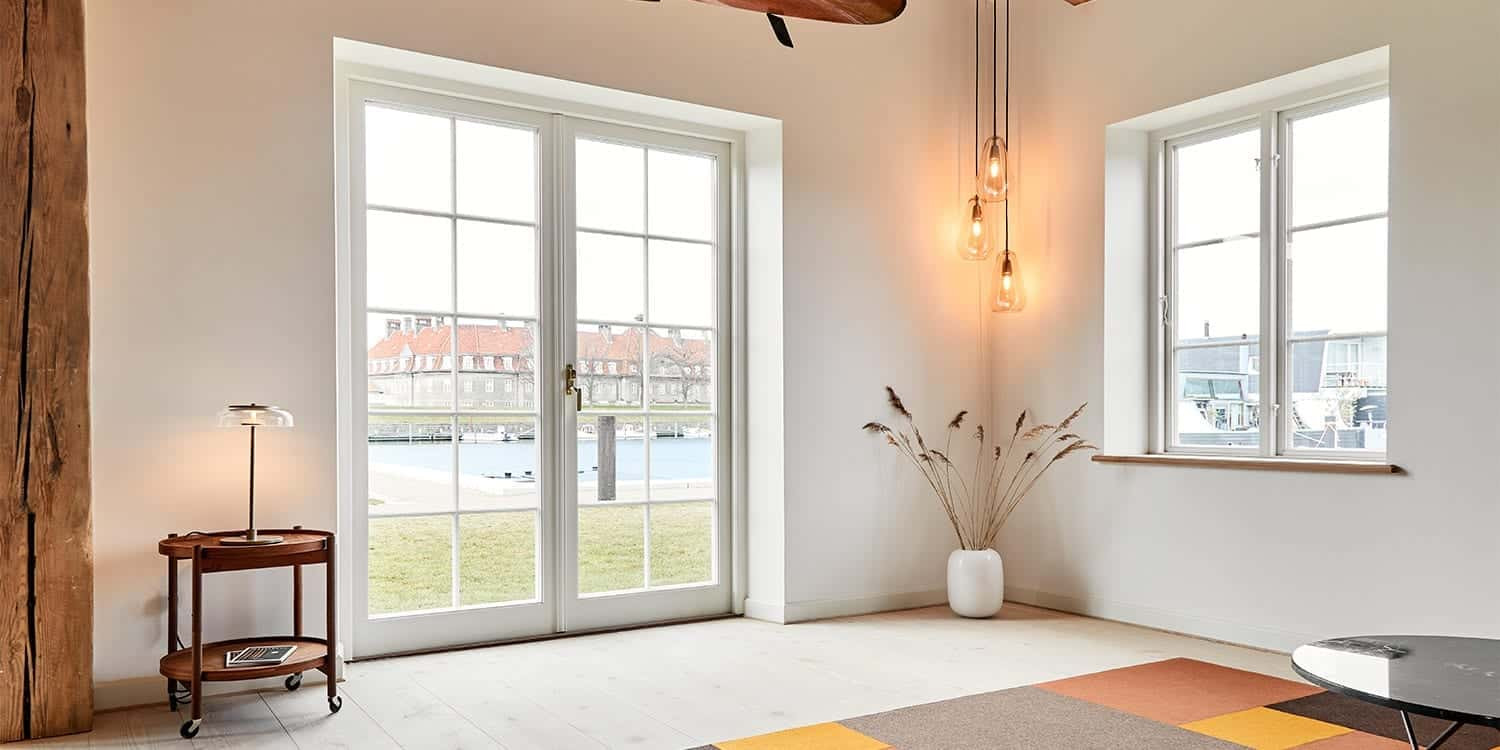 Proper lighting plays a key role in creating true Scandinavian coziness. The hygge atmosphere in interior — the Danish concept of coziness and enjoying the simple moments of life — largely depends on how light is organized. Here are several basic techniques that will instantly transform your space:
Proper lighting plays a key role in creating true Scandinavian coziness. The hygge atmosphere in interior — the Danish concept of coziness and enjoying the simple moments of life — largely depends on how light is organized. Here are several basic techniques that will instantly transform your space:
- Maximum use of natural light (large windows, light curtains)
- Main lighting (simple ceiling lights)
- Functional (work) lighting (table lamps, wall sconces)
- Decorative lighting (string lights, candles for creating coziness)
Implementing these lighting principles will allow you to create that unique feeling of Scandinavian comfort that is so valued around the world. It is light that transforms an ordinary space into an atmospheric place. Scandinavian-style lamps with laconic forms made of wood or metal will emphasize the style of the interior and create soft, diffused light.
Regional Differences in Scandinavian Style
 Although Scandinavian style is often perceived as a whole, it has interesting regional differences that reflect the cultural and climatic features of Northern European countries:
Although Scandinavian style is often perceived as a whole, it has interesting regional differences that reflect the cultural and climatic features of Northern European countries:
- Swedish style — the most restrained and minimalist. Characterized by an abundance of white color, simple lines, and functionality. Swedish interiors often feature bright accents and textiles with traditional patterns.
- Danish style — the embodiment of the hygge concept. Emphasizes creating a cozy, comfortable atmosphere through natural materials, subdued lighting, and thoughtful details. Danes more often use warmer shades and natural wood of medium tones.
- Norwegian style — more saturated and colorful due to harsh natural conditions. Characterized by bright accents, abundance of wood, traditional ornaments, and patterns. Norwegian interiors often include elements of rustic style.
- Finnish style — distinguished by special attention to eco-friendliness and connection with nature. Finns actively use wood (especially pine), natural stone, and natural textures. Finnish design often features elements of folk art.
Understanding these regional nuances will help you create a more authentic Scandinavian interior or adapt a certain regional version that best suits your preferences and lifestyle.
Success Story: From a Cold Apartment to a Cozy Scandi Space
Designer Anna Sokolova talks about the transformation of a standard panel apartment in Kyiv: "When I first entered this 48-square-meter apartment, it was a cold typical 'one-room' with low ceilings and small windows. The owners — a young couple — wanted something bright and functional, but the budget was limited. We chose Scandinavian style as the perfect solution. We got rid of unnecessary partitions, painted the walls white, added light pine furniture. We created visual volume through vertical shelving units reaching the ceiling. We brought coziness with textile accents — linen curtains, wool blankets and pillows with geometric patterns. The most difficult thing was organizing storage, but we hid everything behind minimalist facades. After three months of budget renovation, the apartment became bright, spacious, and functional. The owners still say that they felt true harmony with the space for the first time."
Modern Trends and Style Combinations
Scandinavian style continues to evolve, adapting to modern trends and needs. Here are the most interesting directions in the development of Scandi interiors in 2024-2025:
Japandi — a Harmonious Fusion of Cultures
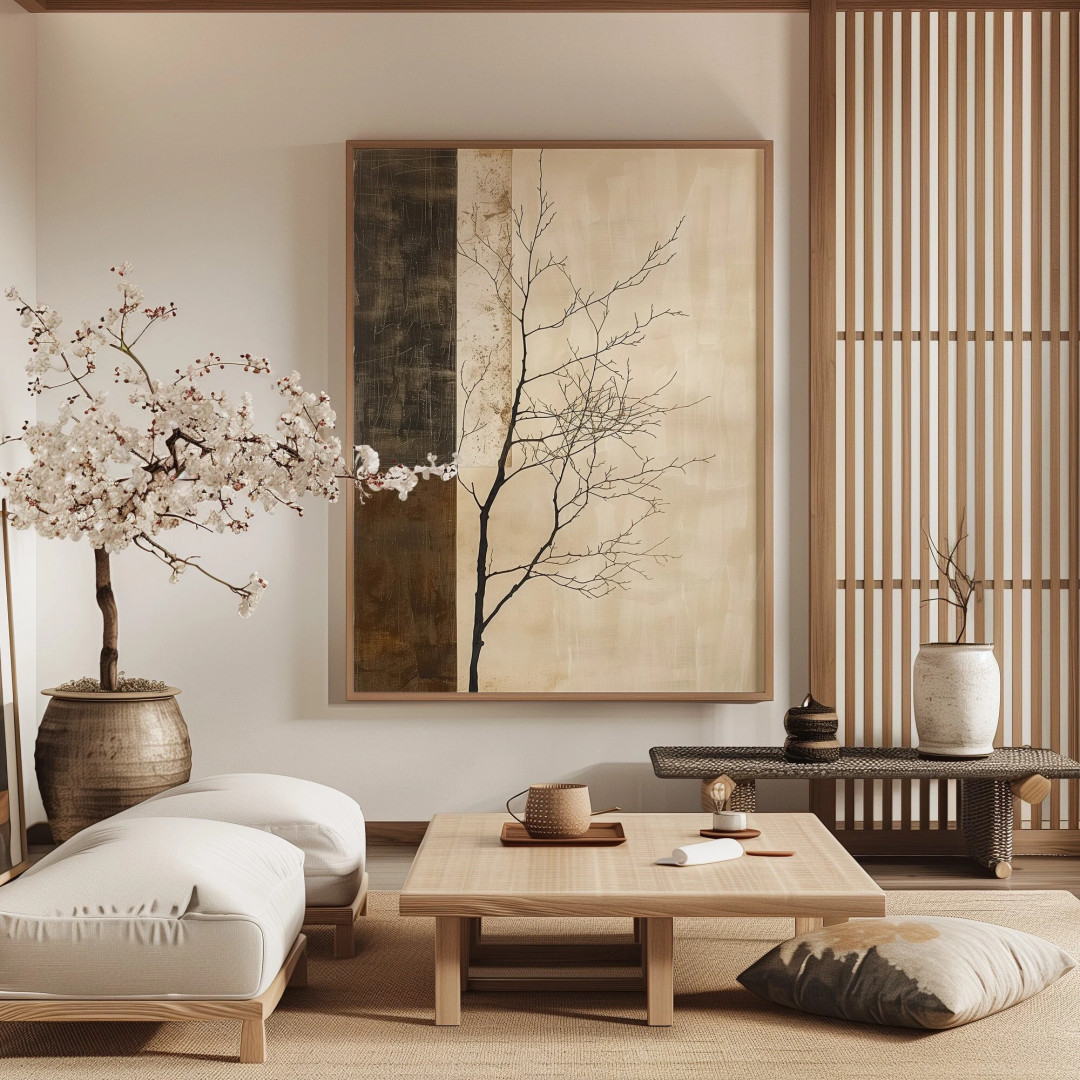 One of the brightest trends in recent years has been the Japandi style — an elegant combination of Scandinavian and Japanese minimalism. This style combines Scandinavian functionality and Japanese elegance, creating a harmonious space with a special character. The main features of Japandi:
One of the brightest trends in recent years has been the Japandi style — an elegant combination of Scandinavian and Japanese minimalism. This style combines Scandinavian functionality and Japanese elegance, creating a harmonious space with a special character. The main features of Japandi:
- Neutral color palette with deeper tones than in classic Scandi
- Special attention to the quality of materials and craftsmanship
- Minimalist decor with an emphasis on the natural beauty of objects
- Balance between Scandinavian coziness and Japanese restraint
- Natural materials processed with respect for their texture and properties
According to analytical agencies, search queries for "Japandi interior" increased by 89% in 2024 compared to the previous year, indicating growing interest in this style direction.
Eco-friendliness and Sustainable Development
Modern Scandinavian design increasingly focuses on sustainable development and responsible consumption. This trend manifests in the following aspects:
- Upcycling — creative recycling of old furniture and interior items
- Preference for local producers and craftsmen
- Use of environmentally friendly materials and finishes
- Vintage elements creating character and uniqueness in the interior
- Energy-efficient solutions in design and planning
Statistics show that queries for "eco-friendly Scandinavian interior" and "Scandinavian style with recycled materials" have increased by 67% over the past year.
New Palette 2025-2026
The traditional Scandinavian white-gray palette has been enriched with new shades in recent years:
- Rich earthy tones — terracotta, ochre, olive
- Muted pastel shades — dusty rose, mint, lavender
- Deep accent colors — emerald, mustard, indigo
- Rich textures — ribbed surfaces, patterned textiles, tactile materials
Analysis of search queries shows growing interest in "Scandinavian kitchen 2025" (+112%), "Scandinavian bedroom with color accents" (+78%), and "Scandinavian style with bright details" (+93%).
Scandinavian Style in Different Rooms
Scandinavian style is versatile and can be adapted for any room. Let's consider the features of applying this style in different rooms:
Scandinavian Style Kitchen
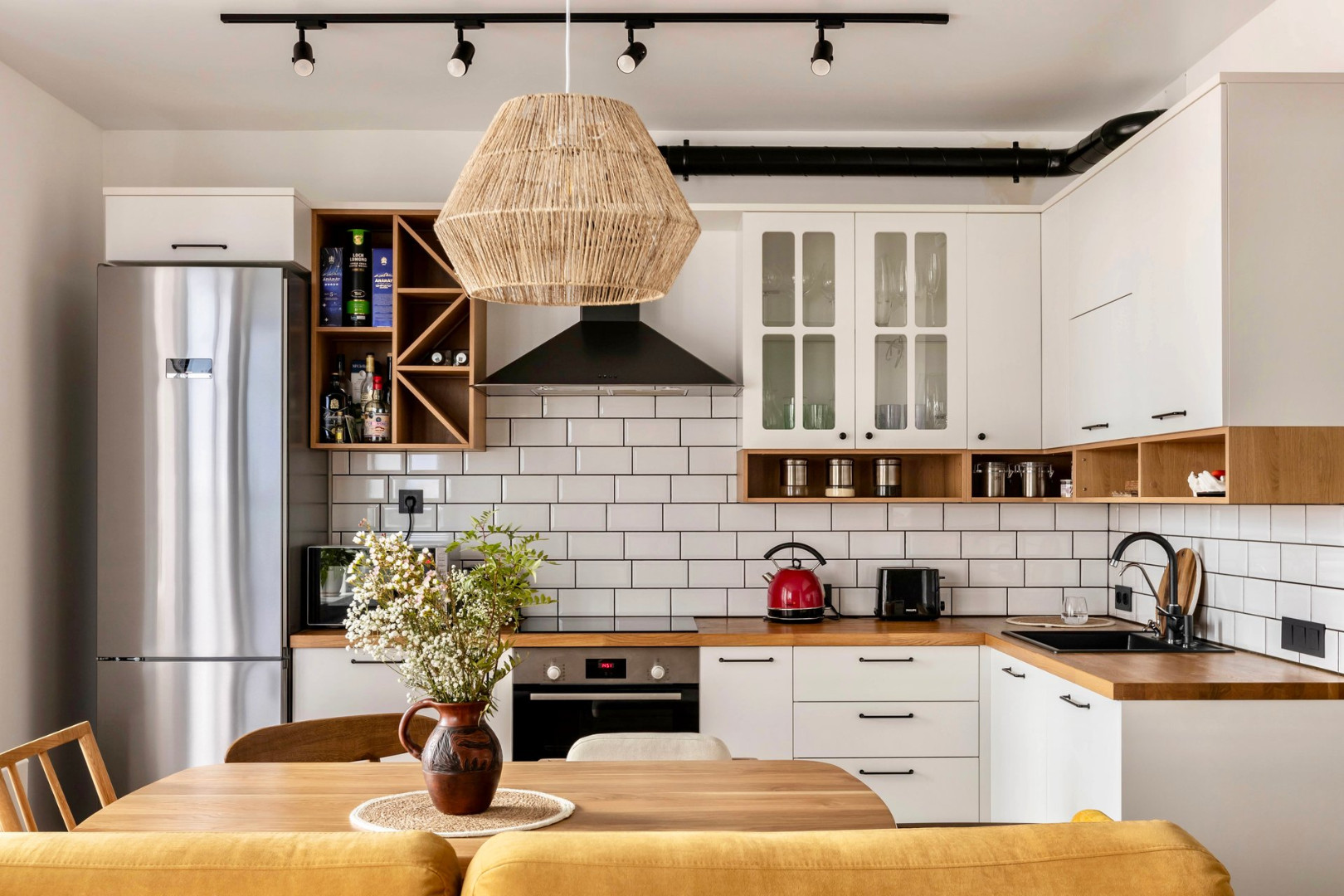 The kitchen is the heart of any home, and in Scandinavian tradition, this is especially noticeable. Here's how to create an ideal kitchen in Scandinavian style that will become not only a functional but also an incredibly cozy space for the whole family:
The kitchen is the heart of any home, and in Scandinavian tradition, this is especially noticeable. Here's how to create an ideal kitchen in Scandinavian style that will become not only a functional but also an incredibly cozy space for the whole family:
- White facades or light wood, creating visual lightness
- Open shelves for dishes, adding airiness
- Minimalist appliances that harmoniously fit into the interior
- Wooden surfaces, bringing warmth and naturalness
- Practical accessories made of natural materials for everyday use
Following these principles, you will get not just a functional kitchen, but a true space for inspiration. A kitchen in Scandinavian style, which can be purchased both ready-made and according to an individual design project, is distinguished by its ergonomics and practicality. When choosing finishes, preference should be given to natural materials.
Scandinavian Style Living Room
The living room in a Scandinavian home is a special place where the whole family and friends gather. To create a truly cozy space in the spirit of northern traditions, pay attention to the following important elements:
- Light walls and floor, creating a sense of space and light
- A comfortable sofa with textile upholstery — the center of attraction and comfort
- A wooden coffee table with a simple and functional design
- A minimalist storage system, helping to maintain order
- Textile accents — pillows, blankets, rugs, adding coziness and warmth
Transforming the living room according to these principles will create a space where everyone will feel comfortable and relaxed, and the Scandinavian atmosphere will become a source of inspiration for all household members and guests.
Scandinavian Style Bedroom
The bedroom in Scandinavian homes is a realm of calm and serenity. To create an ideal space for full rest and recovery, include the following key elements in the design:
- A bed made of light wood with a minimalist headboard, embodying comfort
- Natural bedding (linen, cotton), pleasant to the body and breathable
- Simple bedside tables, combining functionality and aesthetics
- Minimum decor, preventing visual noise and overload
- Soft lighting, promoting relaxation and healthy sleep
Such a bedroom will become your personal oasis of calm, where you can abstract from the outside world and truly restore your strength after a stressful day.
Scandinavian Style Bathroom
 A bathroom in Scandinavian style reflects the Scandinavians' commitment to cleanliness, functionality, and natural beauty. To create such a space where the beginning and end of the day will be equally pleasant, use the following elements:
A bathroom in Scandinavian style reflects the Scandinavians' commitment to cleanliness, functionality, and natural beauty. To create such a space where the beginning and end of the day will be equally pleasant, use the following elements:
- White plumbing fixtures, embodying ideas of cleanliness and order
- Light tiles (possibly with a geometric pattern), visually expanding the space
- Wooden accents (shelves, racks), adding warmth and naturalness
- Minimalist accessories, emphasizing the aesthetics of simplicity
- Plants in simple ceramic pots, revitalizing the space
Such a bathroom will become not just a functional space for hygienic procedures, but a place where you can truly relax and recharge, enjoying Scandinavian aesthetics and functionality.
"Scandinavian design is not just a style, it's a way of life based on the principle of 'lagom' — everything should be in moderation. Not too much, not too little, but just enough for happiness," — Ingrid Fetell Lee, author of "Hygge and Other Secrets of Happy Life."
Features of Creating Scandinavian Interior
Scandinavian style in a small apartment is especially effective thanks to the following techniques:
- Maximum light and minimum visual noise — the key to a sense of spaciousness
- Multifunctional furniture (folding tables, sofa beds) — saving space without losing functionality
- Vertical storage (shelving units to the ceiling) — using the height of the room
- Avoiding massive furniture items — visual lightness
- Using mirrors for visual expansion of space — an optical illusion that works flawlessly
Applying these techniques will help you create an amazingly spacious and functional space even in a limited area. Scandinavian style in a small apartment is a true art of turning disadvantages into advantages!
Principles of Scandi Design
| Scandinavian Design Principle | How to Implement | What to Avoid |
|---|---|---|
| Minimalism | Get rid of unnecessary things, keep only what's necessary | Overloaded with details, excess decor |
| Naturalness | Use wood, stone, cotton, linen, wool | Synthetic materials, plastic, artificial textures |
| Light palette | White walls, light floors, neutral shades | Dark, saturated, and loud colors |
| Functionality | Furniture and items with practical application | Purely decorative elements without functional purpose |
| Hygge (coziness) | Soft textiles, candles, living plants | Cold, sterile atmosphere without personal accents |
This table demonstrates the key principles of Scandinavian design and will help you avoid common mistakes when creating an interior. Following these recommendations, you can create an authentic and harmonious space with a distinct Scandinavian character.
Common Mistakes When Creating Scandinavian Interior
Despite seeming simplicity, when creating a Scandinavian interior, it's easy to make mistakes that will disrupt the harmony and authenticity of the style. Let's consider the most common problems and ways to avoid them:
- Too sterile space — Scandinavian style is often mistakenly perceived as cold and lifeless due to the abundance of white color. In fact, a Scandi interior should be warm and lived-in. Solution: add textures (wood, textiles, ceramics) and living plants.
- Ignoring functionality — Pursuing aesthetics at the expense of practicality contradicts Scandinavian philosophy. Solution: each item should be not only beautiful but also functional.
- Overloaded with details — Adding too many decorative elements violates the principle of minimalism. Solution: adhere to the rule "less is more" and choose quality items.
- Unbalanced color palette — Using too bright colors or, conversely, a complete absence of accents. Solution: stick to a neutral base with 2-3 accent shades.
- Using "fake" materials — Plastic imitating wood or artificial fabrics contradict the Scandinavian love for naturalness. Solution: give preference to genuine materials.
By avoiding these common mistakes, you can create an authentic Scandinavian interior that will be not only aesthetically pleasing but also truly comfortable for living.
Budget Solutions for Scandinavian Interior
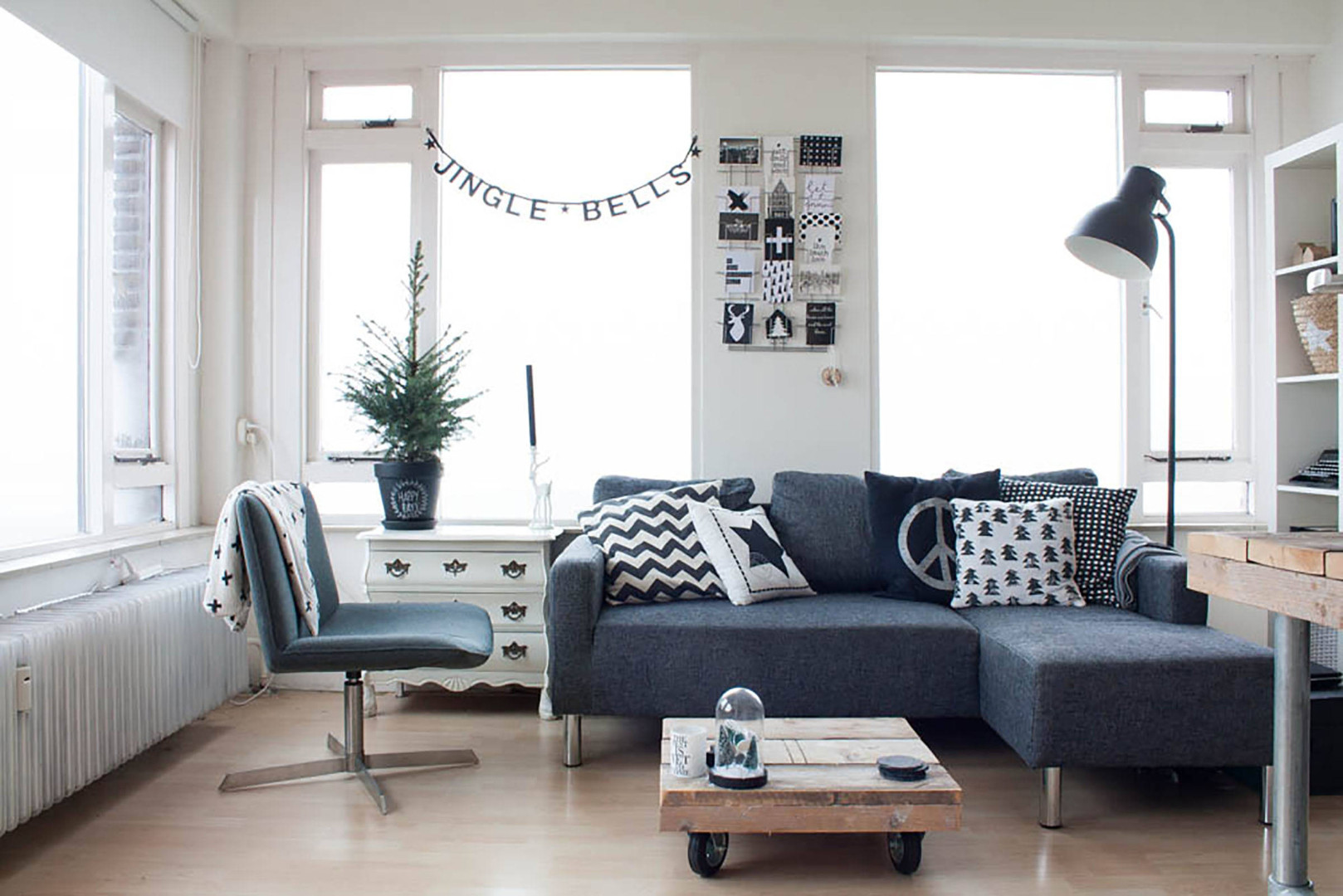 Creating a Scandinavian interior doesn't necessarily require large financial investments. Here are several proven ways to embody northern aesthetics with minimal expenses:
Creating a Scandinavian interior doesn't necessarily require large financial investments. Here are several proven ways to embody northern aesthetics with minimal expenses:
- DIY furniture and accessories — Simple furniture items from accessible materials can be made by yourself. For example, a coffee table from wooden pallets or shelves from construction boards painted white.
- Updating old furniture — Many vintage items can be transformed with white or pastel paint, replacing hardware with more modern ones.
- Textile accents — Inexpensive white curtains, natural pillow covers, or handmade knitted blankets will help create a Scandinavian atmosphere.
- Rational purchases — Buy quality key items (sofa, bed), and additional elements can be found in inexpensive stores or flea markets.
- Natural materials — Use branches, stones, pinecones to create budget-friendly but stylish decor in the Scandinavian spirit.
Scandinavian style originally emerged as an affordable and practical solution for ordinary people, so its basic philosophy perfectly combines with an economical approach to interior design.
Scandinavian Style and Combination with Other Styles
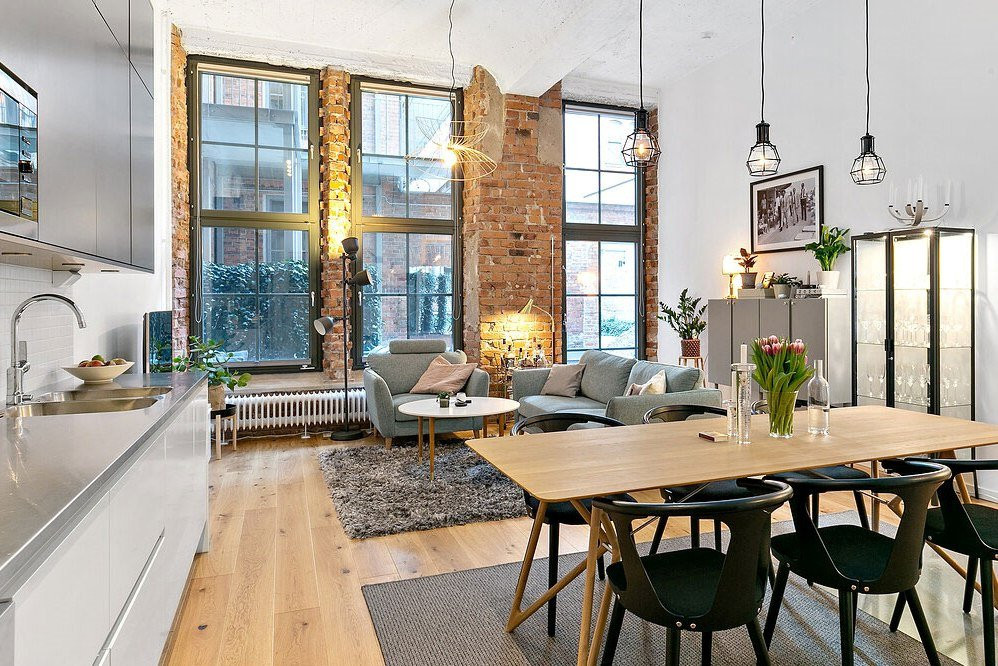 One of the advantages of Scandinavian style is its harmonious combination with other directions in interior design. Let's consider the most successful combinations:
One of the advantages of Scandinavian style is its harmonious combination with other directions in interior design. Let's consider the most successful combinations:
Scandinavian Style and Loft
The combination of Scandinavian style and loft creates a modern yet cozy space. From Scandi, it takes the light color palette and natural materials, and from loft — open communications, brick walls, and industrial accents. Such symbiosis works especially well in spacious rooms with high ceilings.
Scandinavian Style + Eco-style
Both directions are united by a love for natural materials and closeness to nature. When combining Scandinavian style with eco-style, emphasis is placed on even greater use of natural textures, living plants, and environmentally friendly finishing materials. The color palette is complemented by natural shades of green, brown, and sand.
Textures in Scandinavian Design
A variety of textures is an important aspect of creating depth and interest in a Scandinavian interior. Combine smooth surfaces (glass, polished wood, metal) with textured ones (untreated wood, knitted items, woolen fabrics). Such accents in a Scandi interior create visual and tactile diversity even with a limited color palette.
Conclusion
Decorating in Scandinavian style is the perfect combination of practicality, elegance, and comfort. Scandinavian design with its commitment to natural materials, light tones, and functional approach creates a harmonious living space. Northern design is relevant for both spacious houses and compact apartments.
The style of Northern European countries easily adapts to any needs and budget. The main thing is to adhere to the basic principles and not overload the space with unnecessary details. Scandi style in interior is not just a fashion trend, but a whole philosophy based on love for nature, rational use of space, and creating a cozy atmosphere.
